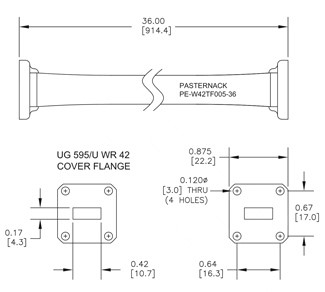 In many installations and test bench scenarios, a precisely designed rigid waveguide structure with the proper flange and orientation is not readily available. Lead times of several weeks to months are common to receive the correct part. This is not always convenient in a design, repair, or replacement situation.
In many installations and test bench scenarios, a precisely designed rigid waveguide structure with the proper flange and orientation is not readily available. Lead times of several weeks to months are common to receive the correct part. This is not always convenient in a design, repair, or replacement situation.
Flexible waveguides at various lengths enable twisting and flexing over a considerable range, which can solve many installation problems caused by misalignment. Another example is in microwave antenna or parabolic reflector positioning applications, which may require physical adjustment many times to ensure proper alignment. In these applications, flexible waveguides enable a much wider range of alignment possibilities, without sacrificing the cost or time of waiting for customized parts.
There are applications where even rigid waveguide structures may not provide the necessary features for solving several installation problems. In applications that produce a wide range of vibration, shock, or creep, a flexible waveguide may be preferred over a rigid waveguide, as the flexible waveguide can provide vibration, shock, and creep isolation to more sensitive waveguide parts. Additionally, in applications with high temperature variability, thermal expansion and contraction can lead to damage of even mechanically robust interconnects and structures. Flexguide is able to contract and expand slightly to accommodate thermal variations and in situations with extreme thermal expansion/contraction issues, an additional bend loop can be incorporated to enable greater displacement.




 Pasternack Blog
Pasternack Blog
